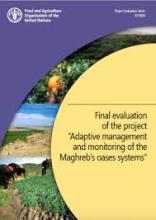Land Library Search
Through our robust search engine, you can search for any item of the over 73,000 highly curated resources in the Land Library.
If you would like to find an overview of what is possible, feel free to peruse the Search Guide.
/ library resources
Showing items 1 through 9 of 4338.Strong evidence indicates that the Brazilian government is taking advantage of the confusion caused by the Covid-19 pandemic to speed-up a wide-ranging environmental setback.
This Handbook provides a comprehensive and systematic overview of the role that Parliamentarians and Parliamentary Advisors can play in the creation of reliable, coherent, and transparent “enabling environments” in the range of areas related to investment in agriculture and food systems.
Landscape and Street Photographers use Neutral Density (ND) Filters to enhance their photos, drones images with advanced photogrammetry software produce high-resolution orthomosaic for the production of land use maps.
For two decades, increasing concerns about urban sustainability have driven Australian metropolitan planning efforts to call for fundamental changes to existing urban forms. These changes are intended to develop more compact cities characterised by a poly-nodal network of dense activity centres.
The Maghreb's oases systems provide a major contribution to the region's food security, economy and natural resources. Despite this potential, oasis ecosystems are threatened by a range of complex factors related to the expansion of agricultural land and increasing scarcity of water resources.
n 2014, the FAO Committee on Fisheries (COFI) endorsed the Voluntary Guidelines for Securing Sustainable Small-scale Fisheries in the Context of Food Security and Poverty Eradication (SSF Guidelines
Land ownership shapes natural resource management and social-ecological resilience, but the factors determining ownership norms in human societies remain unclear.
This article examines and compares the status of land rights and their impacts on agricultural productivity, food security and well-being in a set of tribal and non-tribal villages in Telangana.
Archaeological site mapping is important for both understanding the history and protecting the sites from excavation during developmental activities.



